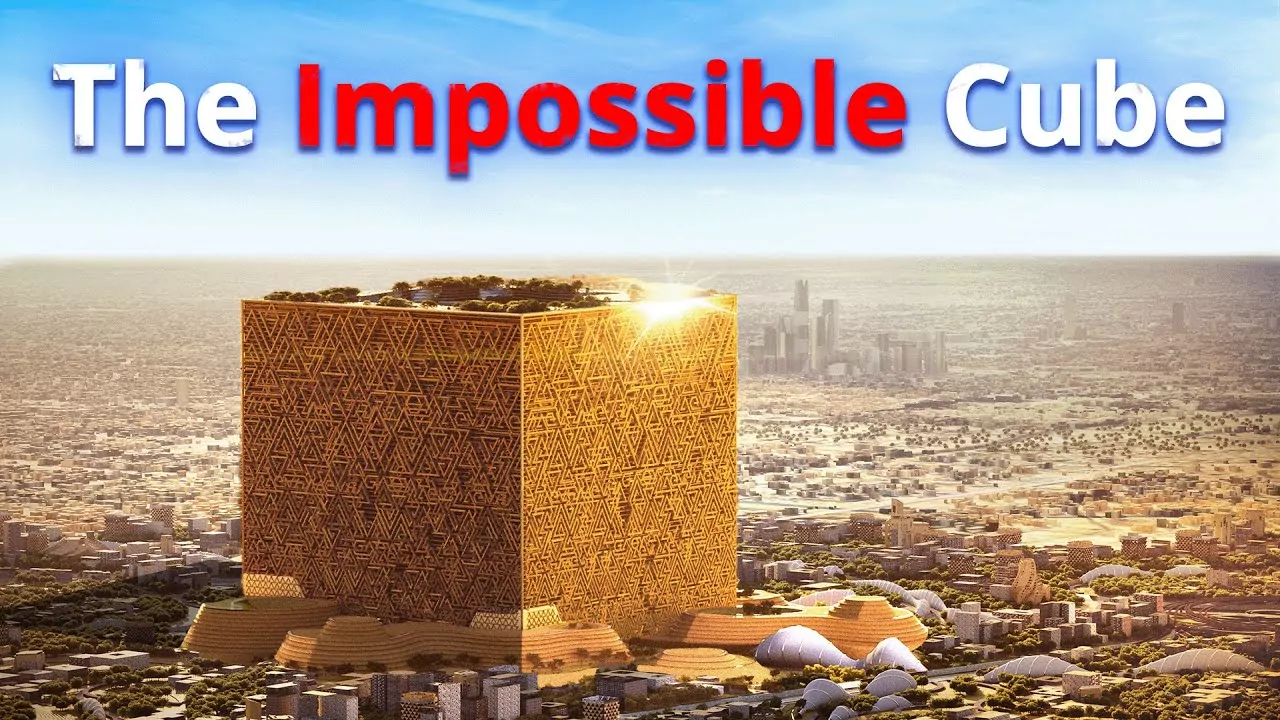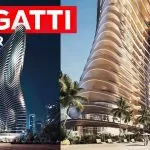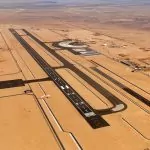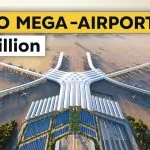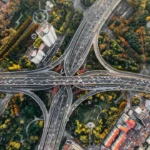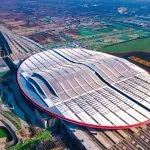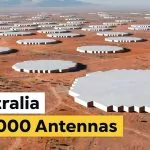Introduction
First ‘The Line’ and the ‘Oxagon’, then the ‘Dubai Circle’ — now a giant cube.
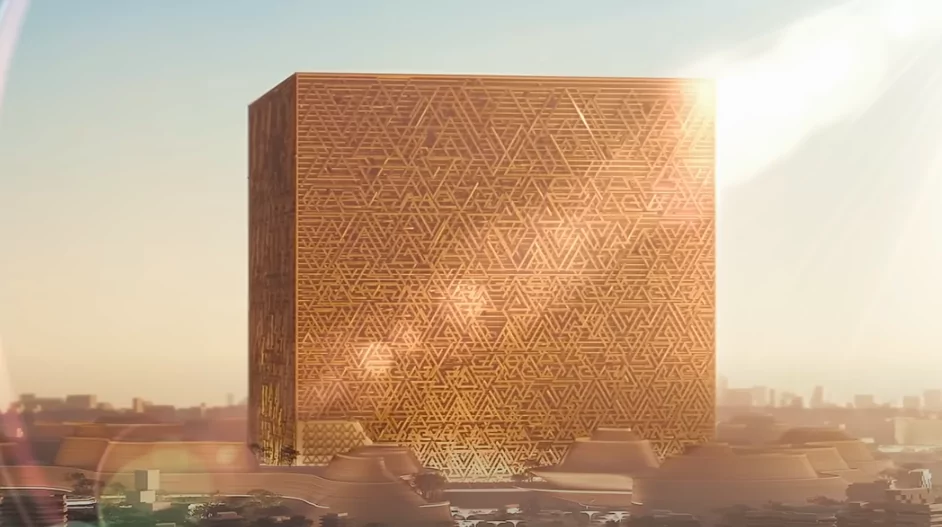
Earlier this month, Saudi Arabia announced its latest project: the Mukaab.
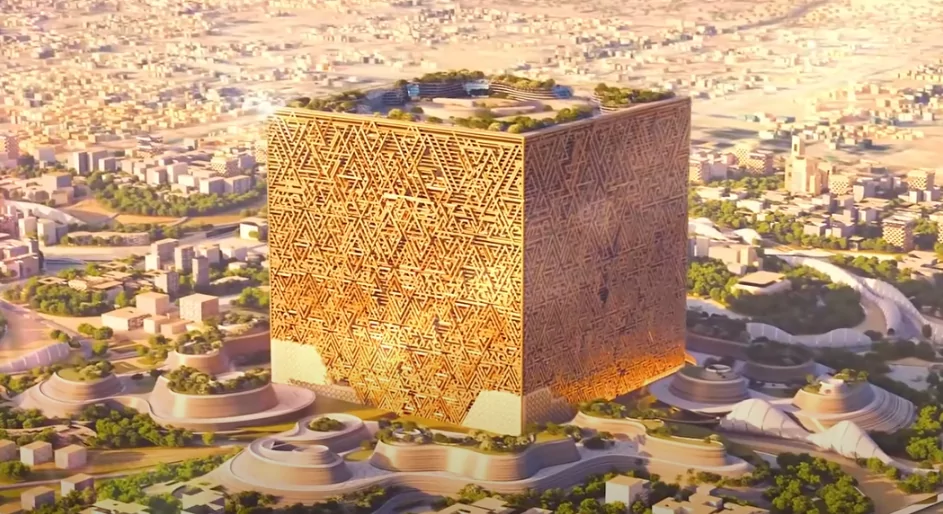
It’s a cube so big that it could fit 20 Empire State Buildings inside of it.
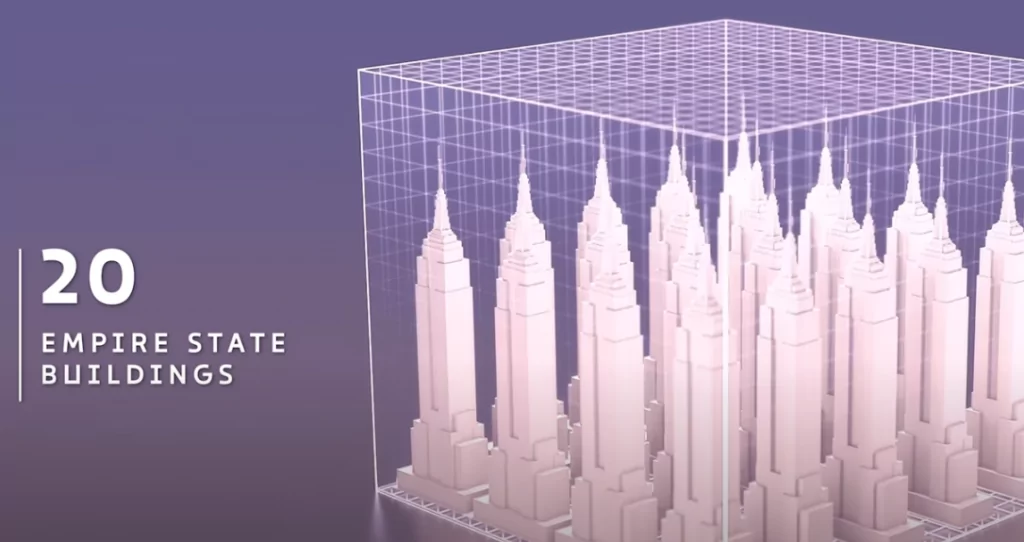
Saudi Arabia described it as a “gateway to another world,” with a holographic dome that transports its visitors to other planets and magical worlds. But is this just a viral marketing stunt, or will the Mukaab actually be built? And if so, when would it open to the public? In this article, we’ll look at everything we know so far.
Advertisement:
NEOM
Saudi Arabia is a wealthy country in the heart of the Middle East that is known for its vast oil reserves. But it is precisely this oil that Saudi Arabia wants to become less dependent on. That’s why they’ve started announcing and building massive megaprojects under the slogan Vision 2030, to slowly shift their economy away from oil and towards tourism. The largest of these projects is NEOM, a $1 trillion megaproject that includes a 170-kilometer long Line city, a floating port-city called Octagon, and a massive ski resort in the Arabian Desert called Trojena.
We have already talked about NEOM in some of our previous articles. But in the last few weeks, there have been some major updates on these projects. In January, the CEO of NEOM announced that the city’s total infrastructure was already 20% complete. An update article— which started with the words “NEOM is real” — showed images from huge construction sites, including the Line, the Oxagon, and Trojena. Saudi Arabia has also partnered with some major companies, including Oracle and NVIDIA, which will help to set up NEOM’s city-wide AI technology.
The New Murabba District
As if the announcement of NEOM including the Line, Oxagon, and Trojena wasn’t enough, now there’s another brand-new project: the New Murabba District.
Welcome to New Murabba
This cube is the latest addition to Saudi Arabia’s Vision 2030. NEOM has drawn a lot of attention in the last few months, but Saudi Arabia doesn’t want to neglect the kingdom’s other big cities. That’s why New Murabba will be built in Riyadh — Saudi Arabia’s capital.
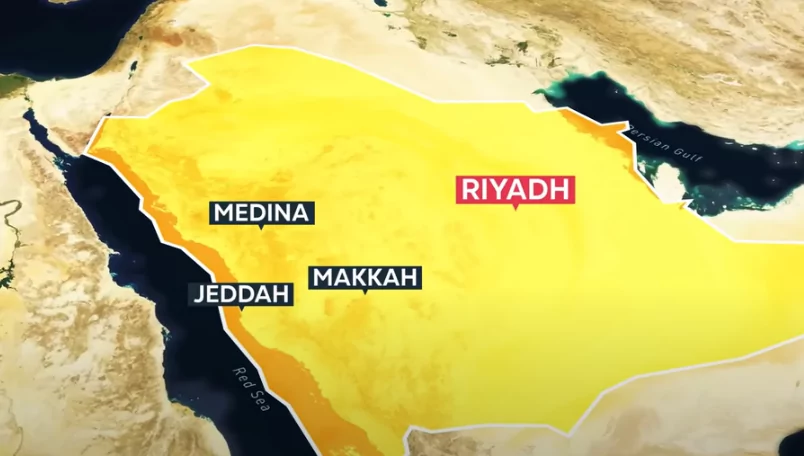
Riyadh is already a rapidly growing city. Fifty years ago, it was a town with less than half a million citizens, but now it has more than 7 million — the third largest city in the Middle East. And according to the Saudi Crown Prince, Mohammed bin Salman, the New Murabba project will become the world’s largest modern downtown.
Advertisement:
This new district is expected to take the growth of Riyadh to another level. It will be fitted out with more than 80 entertainment venues, several walking trails, and a large museum — and at the center of it all, the colossal Mukaab.
The Colossal Mukaab
‘Mukaab’ means ‘cube’ in Arabic, so the building will literally be called The Cube. Building simple geometric shapes at an insane scale seems to be a theme for Saudi Arabia’s megaprojects after the Line and the Oxagon. The Mukaab has been described as the “new face of Riyadh.” The exterior of the cube is inspired by Najdi architecture, a traditional style which has been used by the people of Saudi Arabia for hundreds of years. The beautiful surface will shine in the sun and dominate Riyadh’s skyline.
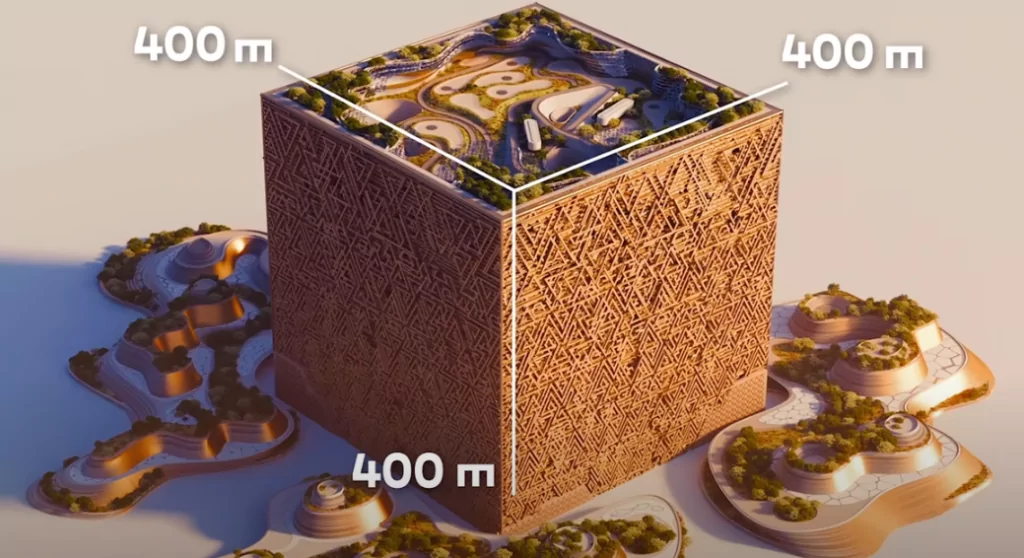
The scale of this cube will be breathtaking. At 400 meters tall, it will technically count as a supertall skyscraper. If placed in Dubai, it would be the 4th tallest building. But unlike other skyscrapers, the Mukaab is also 400 meters wide and would completely dominate the skyline. To put that into context, you could fit 20 Empire State buildings inside the Mukaab. It would dwarf the existing cube-shaped buildings in other parts of the world. The Berlin Cube, for example, is a striking office block in Germany. Its mirrored sides are eye-catching, but it’s only 40 meters tall — you could fit a thousand of these inside the Mukaab.
In terms of sheer volume, this cube could become the largest structure on earth, easily beating the current record holder: the Boeing Everett Factory in Washington. In fact, it would be so big that the Boeing Factory could fit almost 5 times into the cube.
Inside the Mukaab
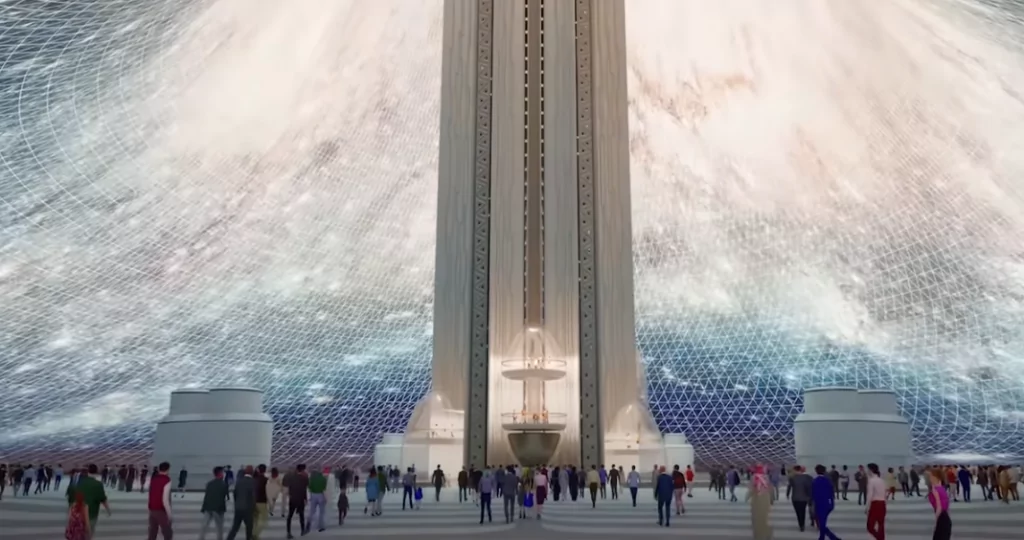
But what will all this space be used for? Setting foot inside the Mukaab cube is meant to feel like entering another world. A colossal dome will tower over its visitors that display’s different virtual realities. These holographic images are supposed to make the Mukaab’s visitors feel as though they’re in a different world. In one second you could be in the bottom of the ocean, while in another moment you are on the surface of Mars or in a magical fantasy world. It’s meant to be an immersive experience unlike anything you’ve ever seen before.
Advertisement:
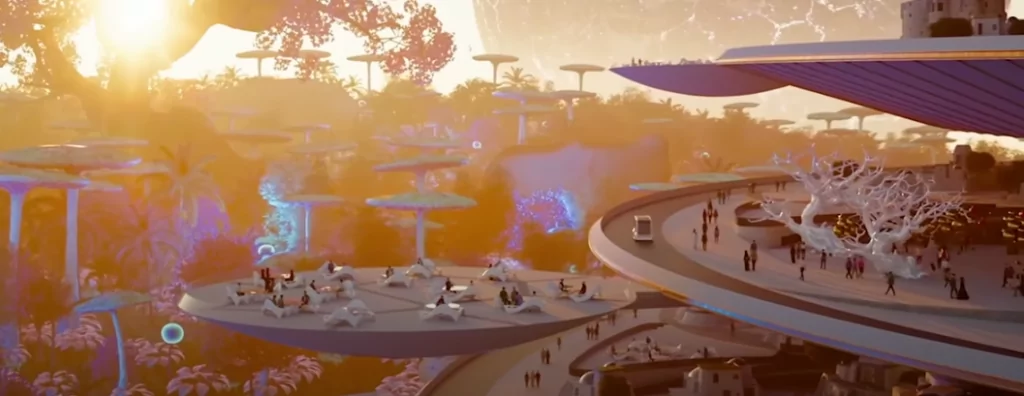
At the center of the dome will be a spiral tower, which looks almost like an anthill, or brackets of fungus, rising from the floor to the roof. This tower is meant to be a premium destination for tourists all around the world. It will have restaurants, hotel rooms, observation platforms, and cinemas and theaters too. The tower and the dome will then be enclosed by the massive cube. The four corners of the cube will also be packed with facilities, stacked up in skyscraper-like towers. The top will be used as well, housing lakes, lawns and trees. Whether it makes sense to build a lake on it, or if it’s even possible, is another matter.
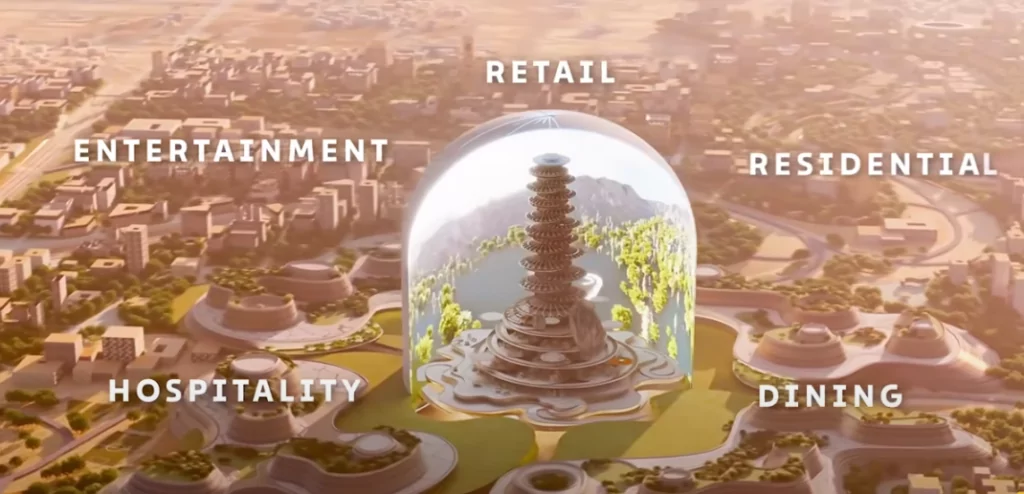
The Design of the Mukaab
So why is the Mukaab cube-shaped? According to the Mukaab’s designers, the cube-shaped design is the most efficient shape for accommodating all the advanced technologies that will support the overall experience. How they want to display the virtual worlds isn’t clear yet but the technology will need to be hidden in the space between the bell-jar dome and the outer cube.
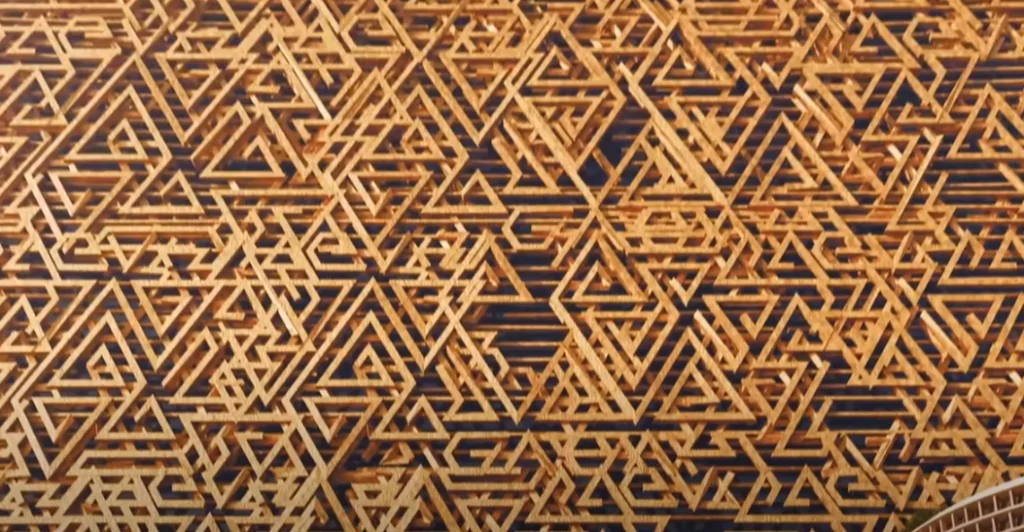
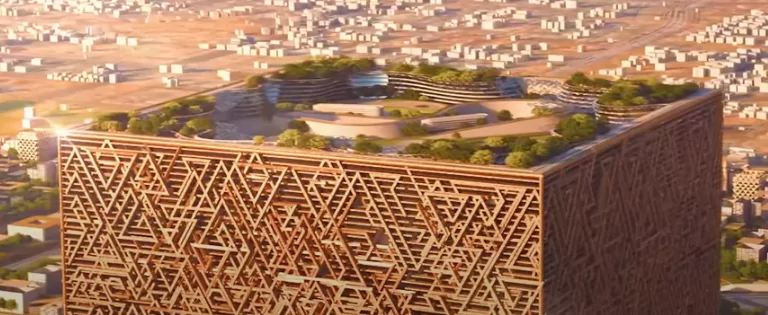
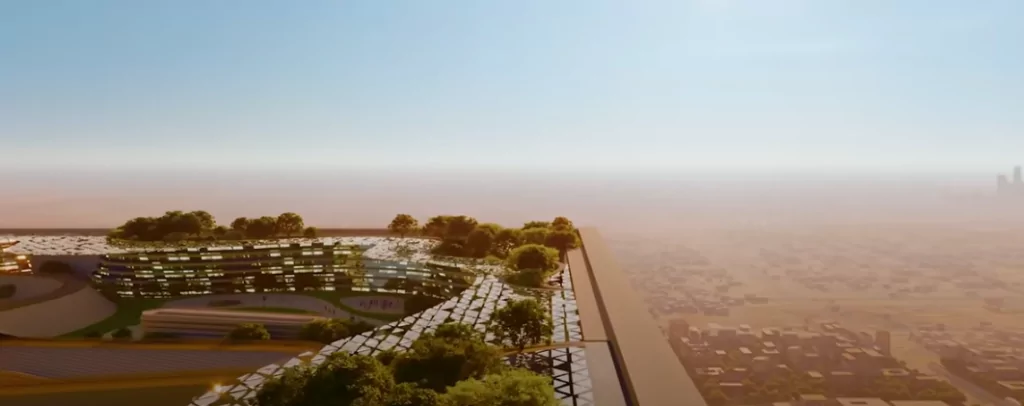
Between the dome and the shell, there will also need to be a robust array of joists and beams to hold up the gardens on the top of the cube. The skyscraper-like towers at each corner of the cube will help with support as well. If that’s enough to support the largest roof in the world and the garden on top is questionable.
The cube-shaped design is also meant to make the Mukaab more iconic. The Mukaab would give Riyadh a unique landmark that would make the city instantly recognizable among other big cities in the world. It’s like the Eiffel Tower in Paris, or the Statue of Liberty in New York. Whenever anyone sees a photo of the cube, they will instantly think of Riyadh.
Yet, the shape has drawn a bit of criticism. Some people say that it bears a resemblance to the Kaaba, in Mecca; another city in Saudi Arabia. The Kaaba is the most sacred site in Islam; when a Muslim prays, anywhere in the world, they make sure to face towards it. But other people have dismissed the similarity and pointed out that the Kaaba isn’t the only cube in the world. When the Berlin Cube was built in Germany, nobody said it resembled the Kaaba, so why should the Mukaab be any different? These people also pointed out that the Saudi crown is Muslim; they wouldn’t deliberately build an offensive, Kaaba-shaped building, so the similarity is probably a coincidence.
In general, the announcement of the Mukaab project has been met with excitement and intrigue. But everyone has the same question: will the Mukaab be built?
Will the Mukaab be built?
Construction hasn’t started yet, but in theory, it will begin in the next few months. Saudi Arabia has promised that the project will open to the public in 2030, just like the other Vision 2030 projects, including the Line, the Oxagon, and Trojena.
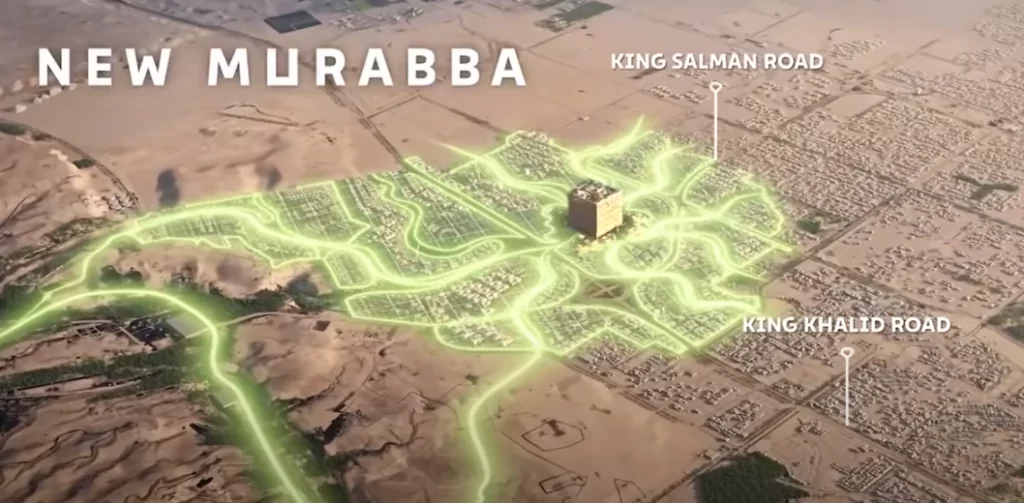
Compared to the Line, this project is probably easier to achieve. Nevertheless, it would pretty much still be the biggest megaproject ever built. That’s why its outcome is hard to predict. So let’s break it down into three different scenarios:
Scenario 1
The first possible scenario, which Saudi Arabia would probably enjoy the most, is that the construction of the cube will start in the next months and the 400-meter tall cube will be finished by 2030, exactly as they have announced it. Riyadh will receive its new icon and slowly attract more and more tourists from all over the world to become one of the most visited places on earth.
Scenario 2
If this all sounds too good to be true, that’s because there are quite a few hurdles to overcome, which leads us to the second scenario: financial experts are already skeptical about the feasibility of the project. They cannot see where Saudi Arabia will find the money to build yet another ambitious megaproject. Doctor Andreas Krieg, an expert in Middle Eastern Studies at Kings College London, said “The finances of all of this are not entirely secured.”
A few days after the Mukaab’s announcement, CNN asked the Public Investment Fund how they planned to finance the project. The PIF replied that financial details had not been disclosed yet, but that more information would be released soon.
Advertisement:
A lot will depend on foreign investment. By 2030, Saudi Arabia is hoping to bring in more than $100 billion per year, which would help to finance projects like the Mukaab. They’re nowhere near that figure yet, but if enough hype can be generated, foreign investment could rapidly start to rise. But there’s no guarantee of that happening, though. Vision 2030 was accused of human rights violations by Amnesty International, leaving a stain on the entire project and potentially scaring off investors.
So in this second scenario, construction of the cube will start as planned, but because of a lack of financing, it will either get scaled down or only partially completed by 2030.
Scenario 3
The final possible scenario is that the project will never see the light of day. That it was a cool idea, but it will simply be scrapped when Saudi Arabia realizes it isn’t feasible. Saudi Arabia has made some bold promises, but whether they can deliver on all of them, remains to be seen.
That being said, it’s hard to predict whether the project will succeed. The plans are ambitious, but the deadline for completion is tight. We’ll have to wait and see.
Conclusion
At the end of the day, the project’s future is uncertain. It’s likely that the Mukaab will at least partially be completed, but the final product may be scaled down from the grand vision initially presented. Even if it’s not entirely finished, the Mukaab will be a unique and exciting addition to Saudi Arabia’s tourism landscape and will surely draw attention from around the world.
